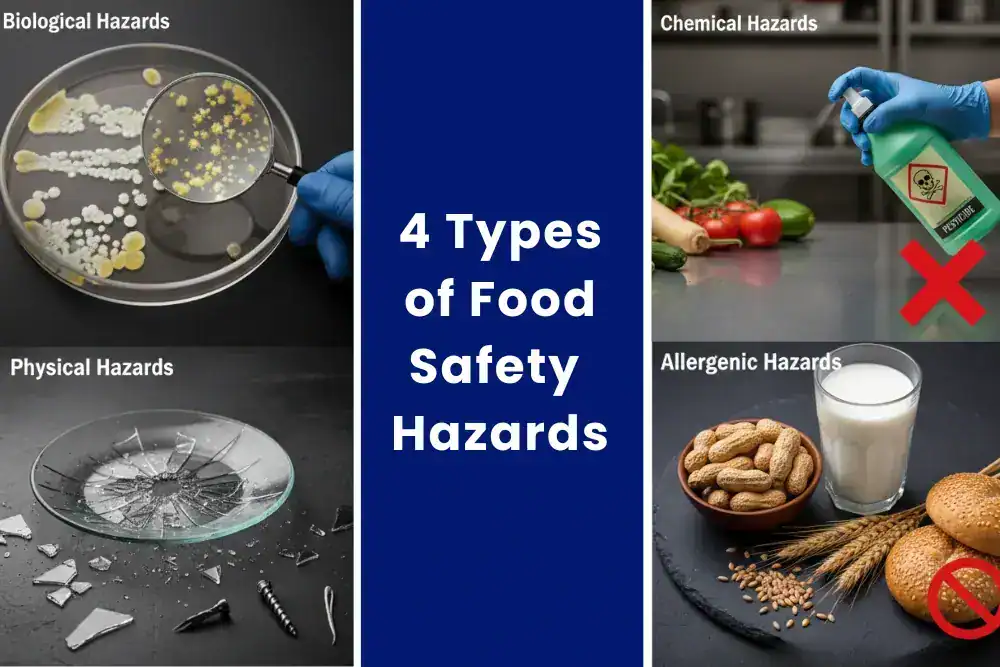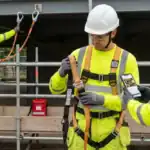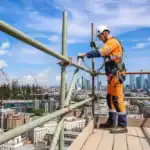
All employers are accountable for health and safety. If you’re an employer, you must ensure regulatory compliance with every act, order and set of regulations relevant to your work.
It’s impossible to do this while also managing day-to-day operations so it’s permissible to appoint others from within or outside your organisation to help with health and safety duties. But anyone you appoint must be competent. So, what is health and safety competence? And how do you measure it? Our guide explains.
What is Competence?
According to the Health and Safety Executive (HSE), competence is “the combination of training, skills, experience and knowledge that a person has and their ability to apply them to perform a task safely.”
So, health and safety competence is made up of two parts:
- Training, skills, experience and knowledge
- The ability to apply those attributes to work
Training, Skills, Experience and Knowledge
You can’t be competent without sufficient training, skills, experience and knowledge. While these terms are sometimes used interchangeably, they each refer to something specific:
- Knowledge: Knowing the relevant health and safety information and regulations.
- Skills: Applying knowledge in a practical way to perform tasks correctly.
- Experience: Having a history of applying knowledge and skills in different contexts.
- Training: Developing and reinforcing skills and knowledge in a controlled environment.
Training is often the first step in achieving competency. It allows you to develop the necessary knowledge and skills without any consequences for making a mistake.
Training shouldn’t be a one-off event, however. We naturally forget details without regular reinforcement. Familiarity also makes us complacent. Refresher or further training can help prevent these outcomes.
Health and Safety Courses
Our health and safety courses support legal compliance and effective risk management. They raise awareness of common workplace hazards and teach the fundamentals of safe working.
Applying Attributes to Work
Having the relevant knowledge, skills, experience and training is not enough. You must also use these attributes to perform tasks safely. You need to identify potential hazards, follow safety procedures and make good decisions in real situations.
As the HSE notes, attitude and physical capabilities can affect your ability to carry out tasks correctly. So, these factors must also be considered when weighing competence.
Why is Health and Safety Competence Important?
Health and safety competence is vital for several reasons.
Improved Safety and Performance
Competent employees can perform their tasks safely, reducing the risk of accidents and injuries.
Training your employees also demonstrates a commitment to their safety and professional development. This can boost morale, as employees feel more confident and appreciated in their roles. A motivated workforce is more productive and loyal.
Health and Safety Compliance
All workplaces in the UK must comply with the Health and Safety at Work etc. Act (HSWA) and the instruments passed in support of it.
At its most basic, compliance with the HSWA means ensuring a safe and healthy workplace. To do this, you’ll have to comply with a number of regulations passed in support of the Act – a number that grows for riskier workplaces.
All of these regulations specify that workers must be competent to fulfil certain duties. These duties include universal requirements, such as conducting risk assessments, and more specific ones, such as inspecting fall arrest equipment for work at height or operating lifting equipment.

Increased Independence
Having competent employees means you can rely less on external parties to fulfil health and safety duties. You’ll have more control over health and safety procedures and can decide when they should be carried out.
Some complex tasks will probably still need to be trusted to third parties. In these situations, it helps you to be familiar with the task at hand. You can better judge the consultant’s competency and give them the context they need to carry out the task successfully.
Reduced Costs
All of the benefits mentioned so far can reduce costs. Competent staff are less likely to suffer an accident or injury at work, eliminating the associated direct and indirect costs. They’ll also be more motivated and committed.
The HSE can also penalise you for non-compliance. If you don’t appoint competent people to assist you with your health and safety duties, they could make mistakes that jeopardise safety and expose your organisation to legal action. You could be fined or even taken to court for serious failures.
Finally, moving certain health and safety duties in-house saves money on external services. You can also be more confident the contractors you do bring in are worth the fee.
How Can You Measure Competence?
There’s no single way to measure competence because what makes someone competent scales with the risk level of the work.
As the HSE notes, office workers need much less training to do their jobs safely than construction workers.
Instead, health and safety competence must be individually assessed.
Certification is a key indicator. It proves that someone has a certain level of knowledge on a topic and, depending on the type of certificate, can demonstrate their ability to apply that knowledge.
Certificates should be accredited by a relevant third party. Accreditation from industry bodies like RoSPA, IIRSM or CPD (all partners of Human Focus) proves the training is effective and the certificate holder is capable.
Another industry mainstay, IOSH, offers a competency framework that can guide you in assessing and developing competence in your workplace. This framework helps you evaluate the necessary skills, knowledge and behaviours for competence in different roles.
However, competence is relative. If the task you need completed is complex or high-risk, there may be more specific requirements, including licenses or qualifications. You can check which work activities have these additional requirements on the HSE’s website.
How is Health and Safety Competence Developed?
Developing competence in your employees involves a few key steps:
Practical Experience
Employees need hands-on experience to become truly competent. This helps them learn how to handle different tasks and challenges safely.
Continuous Professional Development (CPD)
CPD means ongoing learning. It ensures employees keep their skills and knowledge up-to-date. Encourage your employees to join workshops, webinars and industry events to stay informed about the latest safety practices.
Training
Regular training is crucial for developing and maintaining competence. Training should cover both basic and advanced topics relevant to your workplace. Human Focus offers many health and safety courses to help your employees gain the necessary knowledge and skills. These courses are practical and relevant, so employees can apply what they learn directly to their jobs.

Key Takeaways
- Competence in health and safety involves the right mix of training, skills, experience and knowledge, along with the ability to apply them safely.
- Ensuring competence is critical for improved safety, increased compliance, greater independence from external parties and reduced costs.
- Competence can be partly demonstrated through accredited certifications, such as those offered by RoSPA, IIRSM or CPD, and using frameworks like IOSH’s competency framework.
- Mastering competence requires training to develop and retain knowledge as well as practical experience.
Where to Find Accredited Health and Safety Training
The age of incompetence is over. Investing in health and safety competence is crucial for your business. To support you in this, Human Focus offers a range of online Health and Safety Training courses designed to meet your needs. Our courses are tailored to help your employees develop the necessary skills and knowledge to perform their tasks safely and effectively.
Our easy-to-use online platform allows your employees to learn at their own pace and repeat modules if needed, ensuring they retain and apply the knowledge gained. Whether it’s ladder inspection, manual handling or general health and safety practices, our comprehensive training programmes cover all aspects of workplace safety. And every course comes with a training certificate backed by an independent body.





















